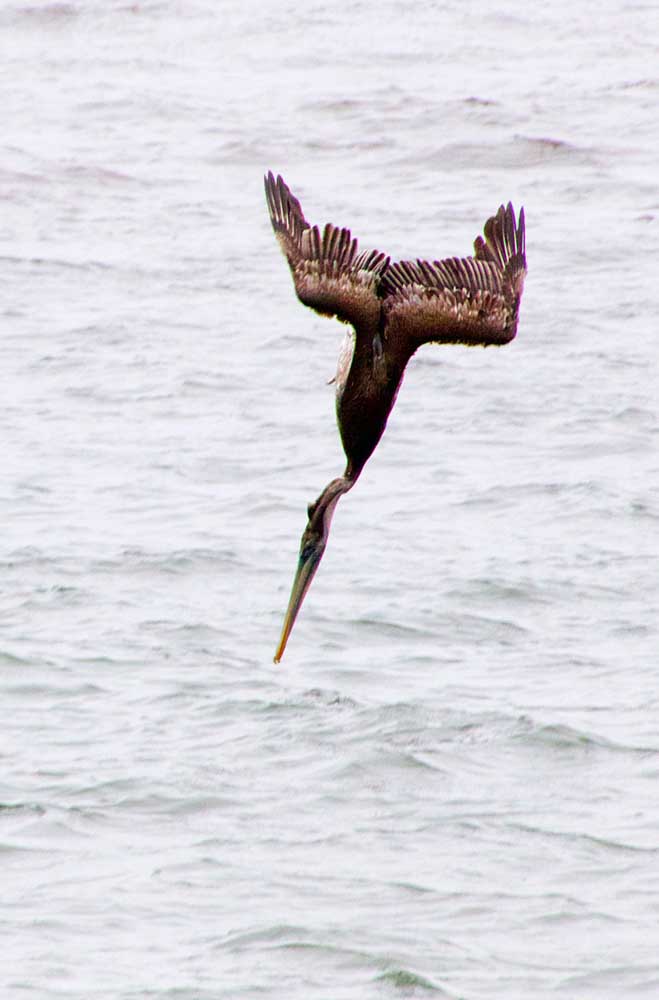Pacific tree frogs and other observations around town
Published 8:42 am Wednesday, September 13, 2023

- Brown pelican diving to snag its lunch.
One of our readers sent me an interesting story about her yard and the birdhouses there in!
Trending
Gloria and her husband have installed about 20 birdhouses on their property. Last summer, in late August or early in September she went on a walk about on her property here on the Peninsula to check out the birdhouses. She noticed that one was inhabited by a Pacific tree frog. A few weeks later, Gloria took another walk, and o her surprise, she saw about 11 frogs “smiling out from their cozy environs.”
Summer 2023 was a repeat. She once again found that her bird cottages were home to several little Pacific tree frogs. Who would have guessed? The frogs’ home is normally in riparian habitat, but they may also be seen in other types of habitat including urban areas. Yard ponds are a typical attraction. During the day, Pacific tree frogs spend a lot of time hiding in such places as under rocks, rotting logs, in grasses and under leaf litter. Since tree frogs are usually nocturnal, it is interesting that several frogs chose to hide out in the bird cottages and peer out during the day! Perhaps they were foraging for prey like spiders or flies that might sail by from their lookout.
This species of tree frog is typically green or brown, depending on the lightness of the background. They can also wear a combination of the two colors. Scientists believe this color change is a useful survival technique. Their color variation can be observed in this article’s featured photos.
Trending
Gloria also reported that the brown pelicans were fishing near the Chinook tunnel. They were flying high and diving for their lunch. They really put on a show. I have seen this once, and in the same place. I have been mentioning the fact that gulls, terns and brown pelicans have been fewer this year, at least when I have been out birding. Several articles have been written in the last few weeks on the consequences of avian flu. It seems that terns in Washington have been decimated by this disease. Perhaps this is one other reason there seem to be fewer observed along our ocean beaches this summer.
Another friend has observed a chestnut-backed chickadee at her hummingbird feeder. It may be that this is unusual behavior, but maybe not. The Cornell Lab cams sent its annual cam videos yesterday. The woodpecker cam proved to be very interesting and informative. The accompanying text said, “A woodpecker at a hummingbird feeder? It’s more common than you think! Several woodpecker species, including the ladder-backed woodpecker, enjoy slurping up these sweet solutions.” Perhaps it is not much of a stretch to think that a chickadee might also be slurping at a hummingbird feeder. My friend is investigating. So, watch this space for additional news!
And finally, another reader reports that he is seeing a Cooper’s hawk lying in wait in his yard for a tasty morsel. Watching this behavior is interesting. Cooper’s and sharp-shinned hawks will take our feeder birds if they can. The good news is that they are seldom successful, especially if there is good cover for the birds to hide in when such a predator lands in the yard.
Thank you to the readers who have sent their observations and photos. I appreciate you all and I know that other readers of this column do too.
Happy birding!









